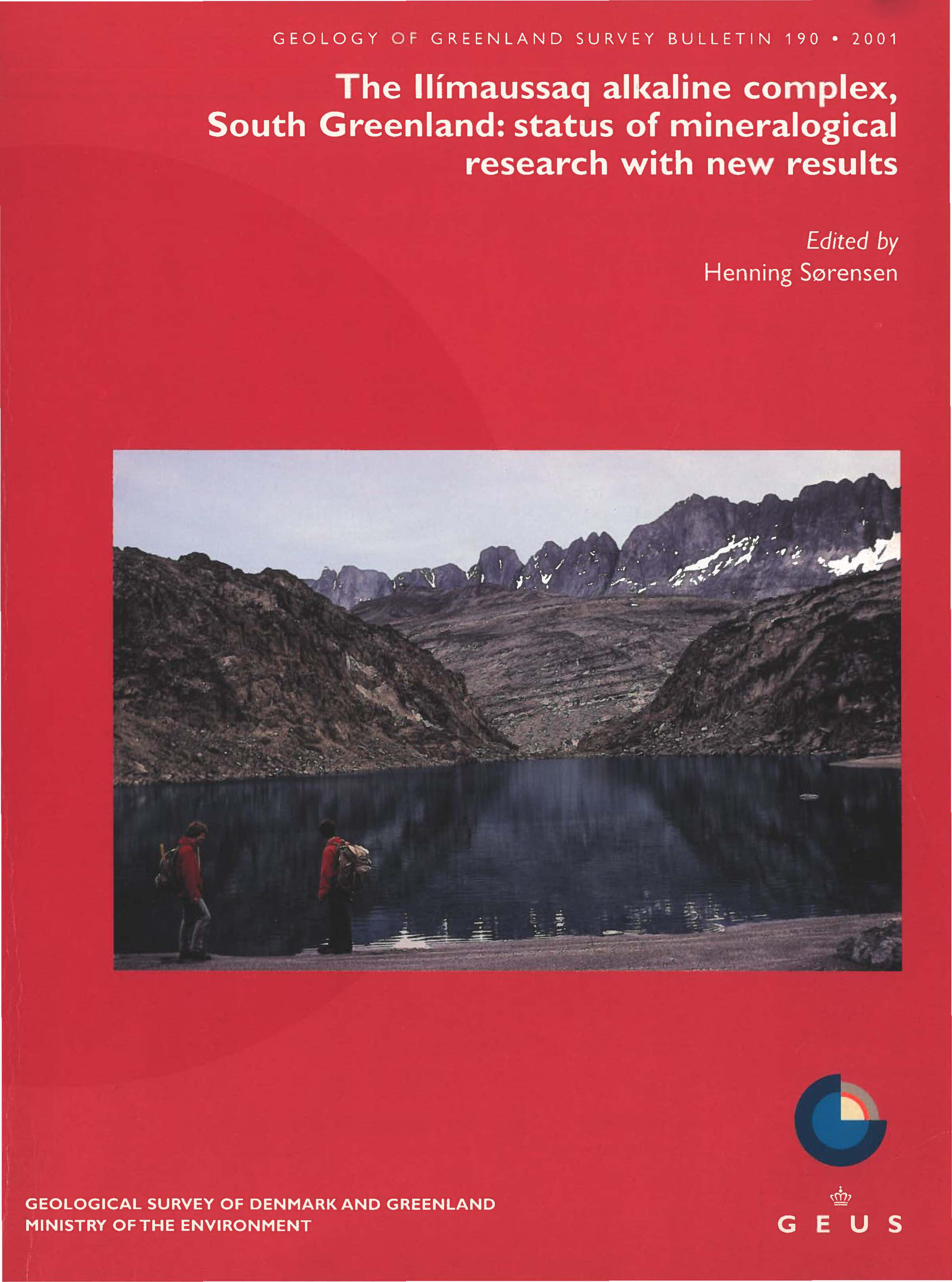A review of the composition and evolution of hydrocarbon gases during solidification of the Ilímaussaq alkaline complex, South Greenland
DOI:
https://doi.org/10.34194/ggub.v190.5187Abstract
Fluid inclusions in minerals from agpaitic nepheline syenites and hydrothermal veins in the Ilímaussaq complex and in similar agpaitic complexes on the Kola Peninsula, Russia, are dominated by hydrocarbon gases (predominantly methane) and hydrogen. Such volatile compositions differ considerably from those of most other igneous rocks and their formation and entrapment in minerals reflects low oxygen fugacities and a wide range of crystallisation temperatures extending to a low-temperature solidus. Their composition reflects initial low carbon contents and high water contents of the magma resulting in the exsolution of a waterrich CO2–H2O dominated vapour phase. Fractionation of chlorides into the vapour phase results in high salinities and the subsequent development of a heterogeneous vapour phase with a highly saline aqueous-rich fraction and a methane-dominated fraction, with preferential entrapment of the latter, possibly due to different wetting characteristics. The light stable isotope compositions support an abiogenic origin for the hydrocarbons in agpaitic nepheline syenite complexes.
Downloads
Published
Issue
Section
License
This article is distributed under a CC-BY 4.0 licence, permitting free redistribution and reproduction for any purpose, even commercial, provided proper citation of the original work. Author(s) retain copyright over the article contents.


